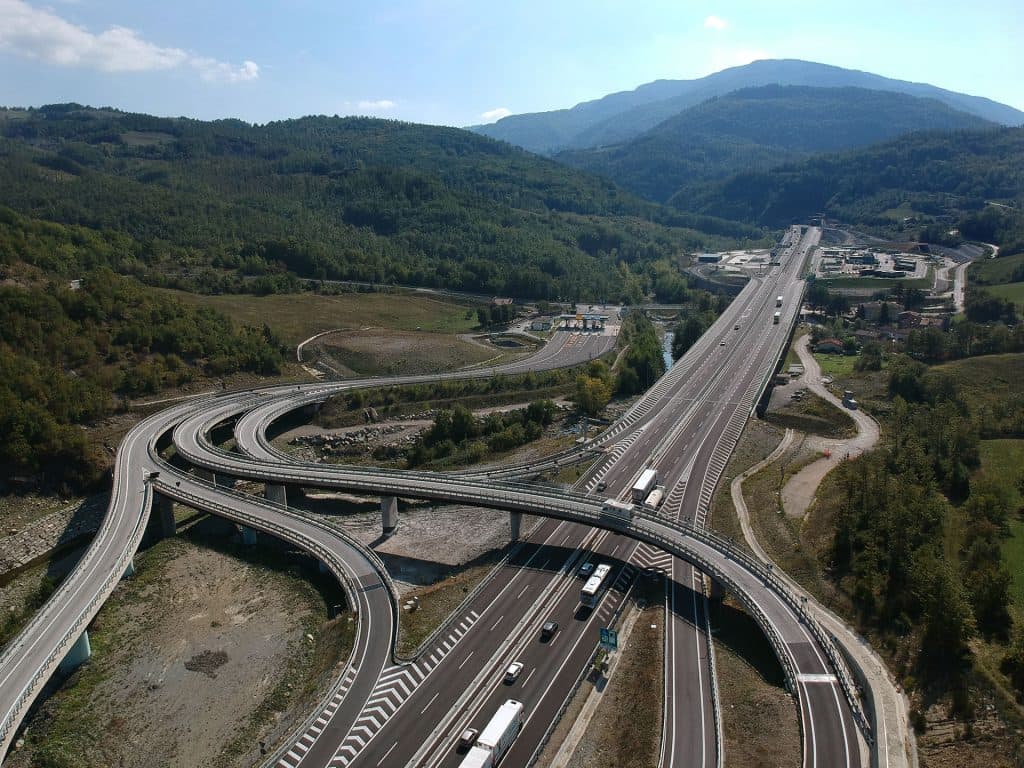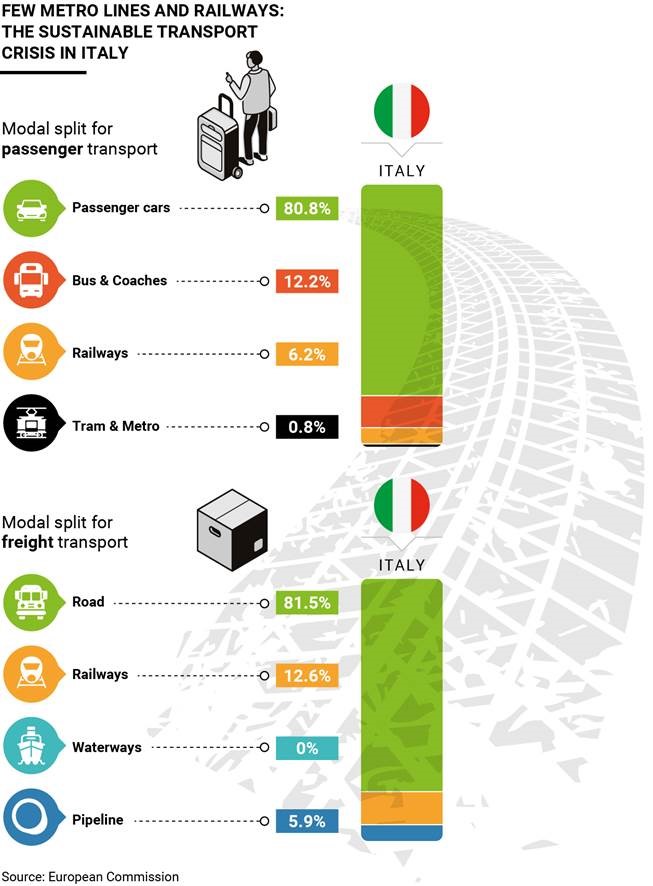
The European Union’s 2018 “Transport in the European Union” study ranks Italy below the EU average because of outdated infrastructures, inefficient transport networks, lack of competition in transport services, questions about the safety of regional railways and often inadequate local public transport. The report (the first and most recent published on the subject by the European Commission) nailed Italy at 22nd place among 28 EU countries for the efficiency of its transport network, adding that this poor performance has a direct impact on its economy.
One of the major causes of inefficiency, the report said, is a lack of connection between ports and the hinterland. In the south of the country only 8% of ports are connected with a railroad for freight transport, compared to 48% of those located in the north.
This gap has also been pointed out by the World Bank, which ranked Italy in 21st place globally in terms of the efficiency of its logistics sector, and 12th among the EU countries. The result, again, is due to fragmented infrastructure and the lack of connections.
An automobile-dependent country
Transportation in Italy is dominated by the automobile. Over 80% of trips are made by car, while the use of trains, subways and public buses is below the European average. Yet Italy’s roads are sub-standard: the country is in 19th place among the 28 countries for the quality of the road network, well below the European average, according to the European Commission’s study.
The study said Italy is behind on finishing the European TEN-T high-speed rail networks, lagging at 41% completion of targets, below the European average and behind Spain.

The World Economic Forum’s view
The quality of infrastructure plays a decisive role in a country’s ability to compete, according to the World Economic Forum’s Global Competitiveness Index, which uses infrastructure as one of its parameters.
In the general competitiveness ranking in the last report, Italy ranks 31st in the world (and 17th place in Europe), behind for example some Arab countries like Qatar or the United Arab Emirates, behind many other European countries including Spain, and trailing many Asian countries.
Looking at major works, Italy moves up the ladder to 21st place. The country is very advanced in terms of energy distribution, airport connections, and road density. But it shows significant delay in railway efficiency (where it is 49th in the world), in the quality of roads (54th) and in the efficiency of port services (47th).
These are significant delays, hindering the European Union in achieving its overall goal of developing the continent’s transport network, which it considers a strategic asset for the economic development of EU member states.
A strategic sector for Europe
Transport is a strategic sector for Europe, not only from the point of view of users, but mainly for the impact in economic and employment terms. The European Commission calculates that the sector represented 9% of EU GDP in 2015 and employs 9% of the workforce (10.5 million people).
The sector has an equally important weight in terms of export and trade, to the extent that 17.2% of the total services exported by EU countries in 2016 was linked to the transport sector.
It is no coincidence, therefore, that the European Union has aimed for years to develop high-speed rail as a primary tool for connecting the various member states.
The EU has allocated €30.4 billion from 2014 to 2020 within the Connecting Europe Facility project, of which €24 billion are allocated directly to transport.
Most of the investments are concentrated in the TEN-T networks (Trans-European Transport Networks), nine multimodal corridors considered strategic for the Union. Four of them (the Baltic-Adriatic corridor, the Scandinavian-Mediterranean, the Rhine-Alps and the Mediterranean) directly involve Italy. The EU wants construction to be completed by 2030, to boost the continent’ fast transport links.
Meanwhile, data from the European Research Advisory Council confirm that – especially in metropolitan areas – public transport in Europe is still underused. Apart from cities like Copenhagen, where today less than 40% of citizens take private cars, on average in European cities only 15% of journeys are made by public transport.
Too little for a continent that wants to modernize its mobility by reducing congestion and environmental pollution.

